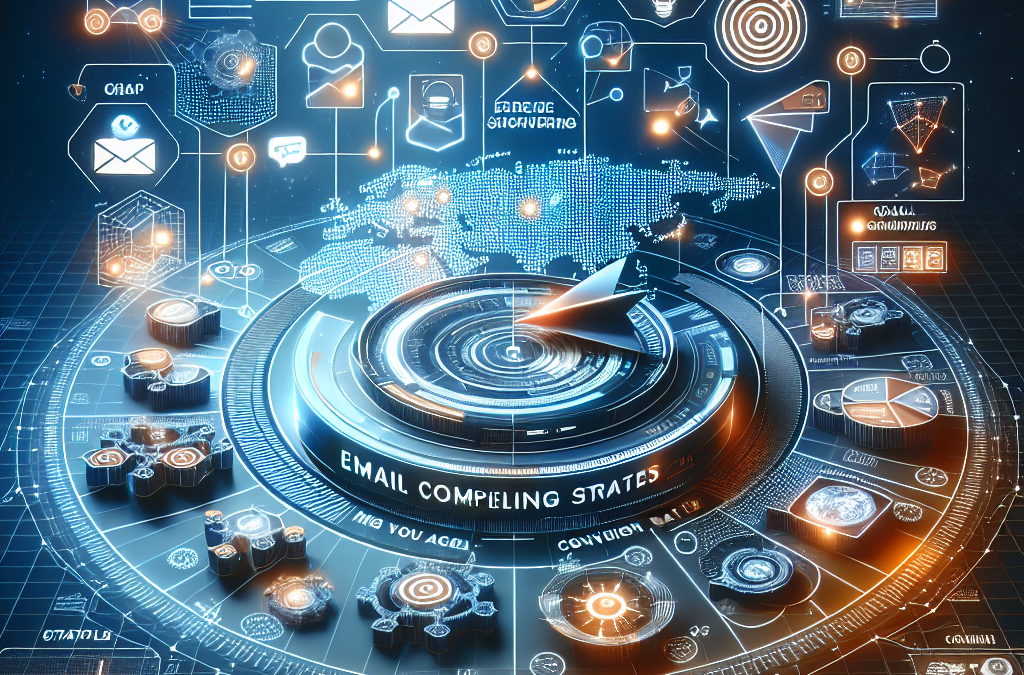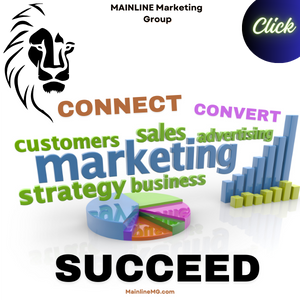Table of Contents
- 1. Hyper-Personalized Email Campaigns
- 2. Segmented Email Campaigns
- 3. Automated Email Campaigns
- 4. Interactive Emails
- 5. User-Generated Content Campaigns
- 6. Educational & Value-Driven Campaigns
- 7. Seasonal & Event-Based Campaigns
- 8. Re-Engagement Campaigns
- 9. Trust & Loyalty Building Campaigns
- 10. Partnership & Collaboration Campaigns
1. Hyper-Personalized Email Campaigns
Crafting Tailored Content for Maximum Impact
In 2025, hyper-personalization remains a cornerstone of successful email marketing campaigns that convert. Gone are the days of basic segmentation; today, smart marketers analyze user behavior, purchase history, and browsing patterns to craft highly tailored messages. For example, Netflix personalizes content recommendations based on viewing history â and you can do the same with your email campaigns to boost engagement and conversions.
Using advanced AI tools allows businesses to dynamically customize email content, including product recommendations, subject lines, and offers. This deep level of personalization not only improves open rates but also significantly increases click-through and conversion rates. According to recent studies, emails with personalized subject lines are 50% more likely to be opened.
Actionable tip: Invest in AI-driven personalization tools and constantly refine your customer data to ensure your campaigns stay relevant. Remember, the more you can align your message with your recipientsâ preferences, the higher your chances of converting them into loyal customers.
2. Segmented Email Campaigns
Targeting Specific Audience Groups
Segmentation is a proven tactic to improve the effectiveness of email marketing campaigns that convert. By dividing your email list into distinct groups based on demographics, purchase behavior, or engagement levels, you can craft more relevant messages. For example, targeting repeat buyers with loyalty offers encourages repeat business, while re-engaging inactive subscribers with special incentives can revive dormant relationships.
Studies show segmented campaigns can deliver up to a 760% increase in revenue. This is because targeted emails resonate more deeply with recipients and foster a sense of personal connection.
Actionable tip: Regularly analyze your audience data and refine your segments. Consider dynamic segmentation that updates based on recent activity, ensuring your messages are always timely and relevant.
3. Automated Email Campaigns
Setting Up Drip Campaigns for Consistent Engagement
Automation is essential for creating scalable, effective email marketing campaigns that convert. Drip campaignsâseries of automated emails triggered by user actionsâhelp guide prospects through the sales funnel effortlessly. For instance, a new subscriber might receive a welcome series, followed by targeted product offers based on their interests.
In 2025, automation tools have become more sophisticated with AI integration, enabling real-time personalization and improved performance tracking. According to recent data, automated emails generate 320% more revenue than non-automated campaigns.
Actionable tip: Map out customer journeys and leverage automation platforms like Mailchimp or HubSpot to set up personalized sequences that nurture leads and foster conversions effectively.
4. Interactive Emails
Engaging Recipients with Dynamic Content
Interactive emails are increasingly popular for boosting engagement and driving conversions. These can include embedded polls, quizzes, image carousels, or countdown timers. For example, a fashion retailer might include an interactive lookbook directly within the email, encouraging recipients to explore products without leaving their inbox.
Research indicates that interactive emails have a 73% higher click-to-open rate. They also provide a richer user experience, making your campaigns more memorable and shareable.
Actionable tip: Use tools like AMP for Email or embedded HTML elements to create engaging, interactive content that prompts immediate action, leading to higher conversion rates.
5. User-Generated Content Campaigns
Harnessing Customer Content to Build Trust
Encouraging customers to share their experiences and showcasing this content in your emails can significantly impact conversions. For instance, featuring customer photos or reviews provides social proof, which builds trust and authenticity around your brand.
In 2025, brands that incorporate UGC into their email campaigns report up to a 20% increase in click-through rates. Consumers trust content created by their peers more than traditional advertising.
Actionable tip: Create hashtag campaigns or contests encouraging customers to share their stories, then highlight these in your email campaigns for increased engagement and conversions.
6. Educational & Value-Driven Campaigns
Providing Useful Content That Converts
Educational emails that provide valuable information are highly effective for nurturing leads and fostering loyalty. Examples include how-to guides, industry insights, or exclusive tips relevant to your audience. These campaigns position your brand as a helpful resource, encouraging recipients to engage and take action.
Data suggests that value-driven content increases open rates by 30% and helps build long-term relationships. For example, an online education platform may send free resources, boosting engagement and conversions over time.
Actionable tip: Regularly develop high-quality content that directly addresses your audienceâs pain points, making your emails a trusted source of insights and solutions.
7. Seasonal & Event-Based Campaigns
Leveraging Holidays and Events for Better ROI
Timing your campaigns around holidays, seasons, or notable events can dramatically improve engagement. For instance, launching a Black Friday sale or a New Yearâs promotion can generate a surge in conversions. Personalized event-based campaigns resonate because they tap into current consumer mindsets and behaviors.
Research indicates that holiday campaigns can produce up to 50% higher open and click rates. Using timely, relevant messaging can turn seasonal spikes into consistent results.
Actionable tip: Plan your campaigns well in advance and create themed content that aligns with the specific event or season for optimal impact.
8. Re-Engagement Campaigns
Winning Back Inactive Subscribers
Re-engagement campaigns are crucial for revitalizing your email list and maximizing the value of your contacts. These campaigns often include special offers, surveys to understand disinterest, or exclusive content to rekindle the relationship. For example, a targeted email offering a discount to inactive customers can rekindle their interest.
Studies show that re-engagement emails can recover up to 20% of dormant subscribers, which can significantly boost your overall ROI. It’s essential to track engagement metrics and refine your strategies accordingly.
Actionable tip: Segment inactive subscribers and craft personalized re-engagement messages with clear calls to action to reignite their interest in your brand.
9. Trust & Loyalty Building Campaigns
Creating Long-Term Customer Relationships
Building trust is fundamental for creating email marketing campaigns that convert over the long term. Loyalty programs, exclusive sneak peeks, and behind-the-scenes content foster a sense of community and appreciation. For example, offering early access to new products rewards loyal customers, increasing the likelihood of repeat purchases.
According to research, loyal customers are five times more likely to purchase again and spend 67% more than new customers. Building trust through consistent, valuable communication nurtures these relationships.
Actionable tip: Develop regular loyalty emails that recognize customer milestones and provide exclusive perks to enhance ongoing engagement.
10. Partnership & Collaboration Campaigns
Expanding Reach with Collaborative Campaigns
Partnering with influencers, complementary brands, or industry leaders can amplify your message and create fresh, engaging content. These collaborations can take the form of joint webinars, co-branded offers, or social media shoutouts integrated into your email campaigns.
Collaborative campaigns tend to generate higher open and conversion rates because they tap into the existing trust and audiences of partners. For example, a fitness brand teaming up with a well-known nutritionist can attract a broader customer base.
Actionable tip: Select partners whose audiences align with your target market and craft mutually beneficial campaigns to maximize impact.
Conclusion
In 2025, mastering the art of email marketing campaigns that convert is more critical than ever to staying ahead of competitors and achieving business growth. Whether through hyper-personalization, strategic segmentation, automation, or engaging interactive content, each tactic plays a vital role. The key is to continually test, analyze, and refine your strategies. Remember, the most effective email marketing campaigns that convert are those that connect deeply with your audience, provide real value, and foster trust. By implementing these 10 proven strategies, you’ll be well on your way to boosting your results in 2025 and beyond.
FAQ
1. What are the best types of email marketing campaigns that convert in 2025?
The most effective types include personalized, segmented, automated, and interactive campaigns. Each of these strategies helps target recipients with relevant content, boosting engagement and conversions.
2. How important is personalization in email marketing campaigns that convert?
Personalization is a critical factor. Emails tailored to individual preferences can increase open rates by up to 50% and significantly improve click-through and conversion rates, especially in 2025.
3. How can I improve my email open rates for campaigns that convert?
Focus on compelling subject lines, personalization, and sending at optimal times. Segment your list to ensure recipients receive relevant content, which naturally boosts open rates.
4. What role does automation play in email marketing campaigns that convert?
Automation allows you to send timely, personalized messages without manual effort, nurturing leads efficiently, and increasing overall conversion rates as seen in recent data from 2025.
5. How do I measure the success of my email marketing campaigns that convert?
Track key metrics such as open rates, click-through rates, conversion rates, and ROI. Use analytics tools to identify what works best and refine your strategies accordingly.


